





Cortisone
Application instruction:
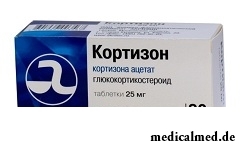 Cortisone – the peroral glucocorticosteroid applied at chronic adrenal insufficiency.
Cortisone – the peroral glucocorticosteroid applied at chronic adrenal insufficiency.
Form of release and structure
The cortisone is released in the form of tablets: ploskotsilindrichesky, white with a yellowish shade or white color, with a facet (on 10 pieces in blister strip packagings, on 8 packagings in a cardboard pack).
Is a part of 1 tablet:
- Active agent: cortisone acetate – 25 mg;
- Auxiliary components: sugar, potato starch, stearic acid.
Indications to use
The cortisone is appointed at chronic adrenal insufficiency (Addison's disease, a hypocorticoidism after a bilateral total adrenalectomy, a hypopituitarism with a secondary hypocorticoidism, inborn dysfunction of bark of adrenal glands) – along with mineralokortikoida.
Contraindications
The only contraindication for short use of the Cortisone according to vital indications is hypersensitivity to drug components.
Children in a growth period can appoint the Cortisone only in the presence of absolute indications and under especially careful observation of the attending physician.
Drug should be used with care at the following diseases / states:
- Infectious and the parasitic diseases of the virus, bacterial or fungal nature (postponed recently or now, including recent contact with the patient): chicken pox, the herpes simplex surrounding the herpes (a viremichesky phase), measles, the amebiasis, a strongyloidosis (suspected or established), system mycosis, active or latent tuberculosis (use at serious infectious diseases is possible only against the background of performing specific antimicrobic therapy);
- The postvaccinal period (the period lasting 8 weeks to and 2 weeks after vaccination), lymphadenitis after BTsZh inoculation;
- Immunodeficiency (including acquired immunodeficiency syndrome (AIDS) or HIV infection);
- Digestive tract diseases: gastritis, an esophagitis, a peptic ulcer of a stomach and duodenum, a round ulcer (latent or acute), ulcer colitis with threat of abscessing or perforation, recently created intestines anastomosis, a diverticulitis;
- Diseases of cardiovascular system: recently postponed myocardial infarction (at patients with a subacute and acute myocardial infarction distribution of the center of a necrosis, delay of formation of cicatricial fabric and, as a result – a rupture of a cardiac muscle is possible), arterial hypertension, dekompensirovanny chronic heart failure, a lipidemia;
- Endocrine diseases: a diabetes mellitus (including disturbances of tolerance to carbohydrates), obesity of 3-4 Art., a hypothyroidism, a thyrotoxicosis, Itsenko-Cushing's disease;
- Heavy chronic liver and/or renal failure, нефроуролитиаз;
- The hypoalbuminemia and states contributing to its development;
- System osteoporosis, acute psychosis, gravis myasthenia, poliomyelitis (except a form of bulbar encephalitis), it is closed - and an open angle glaucoma.
Pregnant women (in particular in the I trimester) can appoint the Cortisone only according to vital indications. In the period of a lactation for the period of administration of drug breastfeeding is recommended to be interrupted.
Route of administration and dosage
The cortisone is accepted inside.
The usual average maintenance dose at chronic adrenal insufficiency makes 25-50 mg a day. Drug is accepted in 2 receptions, at the same time it is necessary to reproduce a day-night rhythm of secretion of the Cortisone: 2/3 daily doses – at 6-8 o'clock in the morning, 1/3 – at 17-18 o'clock. At threat of a stress the day norm can be increased by 2-3 times, having increased at the same time frequency rate of reception to 3-4 times a day (in 6-8 hours).
At inborn dysfunction of bark of adrenal glands the Cortisone is accepted on 25 mg a day along with other glucocorticosteroids (dexamethasone, Prednisolonum). The maximum adult doses make: one-time – 150 mg, daily – 300 mg.
To children drug is appointed depending on age. The maximum doses make (one-time/daily):
- Up to 5 years – 25/75 mg;
- 5-10 years – 50/150 mg;
- 10 years – 75/225 mg are more senior.
If necessary to replace the Cortisone with other medicines with glucocorticosteroid activity, it is necessary to consider that 25 mg of the Cortisone on action are equivalent:
- Hydrocortisone – 20 mg;
- Prednisonum, Prednisolonum – 5 mg;
- Triamcinolonum, Methylprednisolonum – 4 mg;
- Dexamethasone – 0,75 mg.
Side effects
Frequency of emergence and expressiveness of side effects are defined by the therapy duration, a dose and a possibility of observance of a circadian rhythm of appointment.
During use of the Cortisone there can be following side effects:
- Alimentary system: erosive esophagitis, nausea, pancreatitis, vomiting, "steroid" stomach ulcer and duodenum, perforation and bleedings of digestive tract, meteorism, decrease or increase in appetite, hiccups: in rare instances – increase in an alkaline phosphatase and activity of "hepatic" transaminases;
- Endocrine system: decrease in tolerance to glucose, oppression of function of adrenal glands, manifestation of a latent diabetes mellitus or a "steroid" diabetes mellitus, an Icenco-Cushing syndrome (a hirsutism, a crescent-shaped face, an amenorrhea, a myasthenia, obesity of pituitary type, striya, a dysmenorrhea, increase in arterial pressure), a delay of sexual development at children;
- Nervous system: spasms, headache, disorientation, delirium, hallucinations, euphoria, maniacal depressive psychosis, paranoia, depression, sleeplessness, increase in intracranial pressure, concern or nervousness, dizziness, cerebellum pseudoneoplasm, вертиго;
- Cardiovascular system: bradycardia (up to a cardiac standstill), arrhythmias, development (at predisposed patients) or strengthening of expressiveness of heart failure, ECG changes, characteristic of a hypopotassemia, hypercoagulation, increase in arterial pressure, fibrinferment; patients with a subacute and acute myocardial infarction have a distribution of the center of a necrosis, delay of speed of formation of cicatricial fabric that can cause a rupture of a cardiac muscle;
- Musculoskeletal system: delay of processes of ossification and growth at children (premature closing of epiphyseal regions of growth), osteoporosis (it is very rare – an aseptic necrosis of a head of a femoral and humeral bone, pathological fractures of bones), a "steroid" myopathy, a rupture of sinews of muscles, decrease in muscle bulk (atrophy);
- Integuments and mucous membranes: petechias, the slowed-down healing of wounds, ecchymomas, thinning of skin, hypo - or a hyperpegmentation, striya, "steroid" eels, tendency to development of candidiases and a pyoderma;
- Metabolism: the increased sweating, a hypocalcemia, the increased removal of calcium ions, negative nitrogenous balance (because of the increased disintegration of proteins), increase in body weight;
- Sense bodys: trophic changes of a cornea, back subkapsulyarny cataract, increase in intraocular pressure with possible injury of an optic nerve, exophthalmos, tendency to development of consecutive bacterial, viral or fungal infections of eyes;
- Allergic reactions: generalized (acute anaphylaxis, itch, skin rash), local allergic reactions;
- Others: a leukocyturia, an aggravation or development of infections (emergence of these disturbances is promoted by simultaneous use with immunodepressants and vaccines), a syndrome of "cancellation".
Also during therapy there can be disturbances connected with mineralokortikoidny activity of drug, which are shown in the form of a delay of ions of sodium and liquid (peripheral hypostases), a hypernatremia, a gipokaliyemichesky syndrome (arrhythmia, a hypopotassemia, a mialgiya or a spasm of muscles, fatigue and unusual weakness).
Special instructions
During use of the Cortisone it is necessary to control a condition of a cornea and intraocular pressure.
Cancellation of the Cortisone needs to be carried out by gradual decrease in a dose (because of danger of a syndrome of "cancellation") – than the course of treatment was longer, especially reduction of a daily dose has to be slow.
During use of the Cortisone it is not necessary to carry out vaccination in connection with decrease in its efficiency (immune response).
At long treatment of children it is necessary to watch dynamics of their growth and development carefully.
Children who during use of the Cortisone were in contact with patients with chicken pox or measles preventively should appoint specific immunoglobulins.
In a growth period of children glucocorticosteroids can be applied only according to absolute indications and under especially careful observation of the attending physician.
Because of possibility of a disorientation, spasms, dizzinesses, hallucinations, the Cortisone the patients who is managing motor transport and carrying out other potentially dangerous types of the works demanding the increased concentration of attention and bystry psychomotor reactions need to take injuries of an optic nerve with caution.
Medicinal interaction
At simultaneous use of the Cortisone with some medicines there can be following undesirable effects:
- Inductors of "hepatic" microsomal enzymes (rifampicin, phenobarbital, theophylline, Phenytoinum, rifampicin, ephedrine): decrease in concentration of the Cortisone;
- Diuretics (especially "thiazide" and inhibitors of a karboangidraza) and Amphotericinum In: strengthening of removal from K+ organism;
- Natriysoderzhashchy drugs: developing of hypostases and increase in arterial pressure;
- Amphotericinum In: increase in risk of development of heart failure;
- Thyroid hormones: increase in clearance of the Cortisone;
- Cardiac glycosides: deterioration in their portability and increase in probability of development of ventricular premature ventricular contraction (because of the caused hypopotassemia);
- Indirect anticoagulants: easing (is more rare – strengthening) their actions (it is necessary for dose adjustment);
- Anticoagulants and trombolitik: increase in risk of development of bleedings from ulcers in digestive tract;
- Ethanol and non-steroidal anti-inflammatory drugs: strengthening of risk of development of erosive cankers in digestive tract and developing of bleedings (in a combination with non-steroidal anti-inflammatory drugs during therapy of arthritises decrease in a dose of glucocorticosteroids because of summation of therapeutic action is possible);
- Paracetamol: increase in risk of development of a hepatotoxic (formation of a toxic metabolite of paracetamol and induction of liver enzymes);
- Acetylsalicylic acid: acceleration of its removal and decrease in concentration in blood (at cancellation of the Cortisone the level of salicylates in blood and risk of development of by-effects increases);
- Insulin and peroral hypoglycemic drugs, antihypertensives: reduction of their efficiency;
- Cyclosporine and кетоконазол: increase in toxicity of the Cortisone;
- Vitamin D: decrease in its influence on absorption of Sa2 + in intestines;
- Somatotropic hormone: decrease in its efficiency;
- Adrenocorticotropic hormone: strengthening of action of the Cortisone;
- Praziquantel: decrease in its concentration;
- M-holinoblokatory (including tricyclic antidepressants and antihistaminic drugs) and nitrates: increase in intraocular pressure;
- Also oral estrogensoderzhashchy contraceptives are oestrogenic: decrease in clearance of the Cortisone, strengthening of expressiveness of its action;
- Isoniazids and мексилетин: increase in their metabolism (in particular at "slow" atsetilator) and decrease in their plasma concentration;
- Inhibitors of a karboangidraza and "loopback" diuretics: increase in risk of development of osteoporosis;
- Indometacin: increase in risk of development of its side effects;
- Ergocalciferol and parathormone: prevention of development of the osteopathy caused by the Cortisone;
- Androgens and steroid anabolic drugs: development of peripheral hypostases and hirsutism, appearance of eels;
- Anti-thyroid drugs: decrease in clearance of the Cortisone;
- Live antiviral vaccines and other types of immunization: increase in risk of development of infections and activation of viruses;
- Antacids: decrease in absorption of the Cortisone;
- Azathioprinum and antipsychotic means (neuroleptics): increase in risk of development of a cataract.
At simultaneous use with Mitotanum and other inhibitors of function of bark of adrenal glands increase in a dose of the Cortisone can be required.
Terms and storage conditions
To store in protected from light, the place, dry, unavailable to children, at a temperature up to 25 °C.
Period of validity – 5 years.
Name of drug
Price
Drugstore
In our intestines are born, millions of bacteria live and die. They can be seen only at strong increase, but if they gathered, then would be located in a usual coffee cup.

According to doctors, more than a half of men of 25-50 years suffer from frustration of the urinogenital sphere, but sees a doctor from them меньшинс...
Section: Articles about health
Venereal diseases in medicine are called the infections which are transmitted preferential sexually, now they and are called - infections, sexually transmitted, or STD. Among them is also life-threatening. In spite of the fact that majority...
Section: Articles about health
Work of a brain is extremely complex and in many respects is not studied yet. It is confirmed also by the features of thought processes which are shown when the person sleeps. Let's tell about some of them....
Section: Articles about health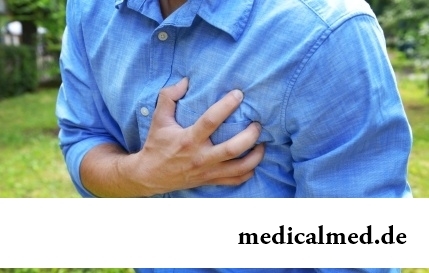
For the time being the perspective of heart diseases seems to most of people remote and foggy. But sooner or later практичес...
Section: Articles about health
The naturopathy sometimes moves as the new direction of medicine, something like fashionable hobby, and there is nothing farther from the truth. This most ancient direction, the word "naturopathy" is translated as "treatment by the nature", and, no doubt, treatment приро...
Section: Articles about health
One of the useful properties presented to the person by the nature is ability to feel fear. This ability is designed to signal about approach of a dangerous situation and to help to avoid in advance it to keep life. However if the fear is persuasive and is not reasonable, it can seriously limit possibilities of the person in respect of socialization and self-realization. Such pathological fear is called a phobia....
Section: Articles about health
Bathing in broths of medical flowers and plants (phytobathtub) was eurysynusic since Cleopatra who is a good judge of everything...
Section: Articles about health
Urogenital candidiasis (milkwoman) – a fungal infection which annoys unpleasant feelings in the field of generative organs, being followed by white curdled allocations, an itch, discomfort during an urination, pain. She is called by Candida fungus – a mustache...
Section: Articles about health
On the head of the person about one million hair follicles, or as they are called still, hair bulbs are located. At the time of the birth most of them is in the "sleeping" state, but within several weeks follicles become more active, and from them hair begin to grow. Intensity of this process is individual, and during life it can change. Genetic predisposition, a physical and emotional state, aggressive influence affects the growth rate of hair out of...
Section: Articles about health
Each person knows that fervescence is an illness sign. However about existence of diseases can to suite...
Section: Articles about health
It would seem, to buy drugs in Moscow does not make a problem – a drugstore, and not one, is available for each resident of the capital within walking distance. And, nevertheless, Internet drugstores become more popular – what it is possible to explain such phenomenon with? Actually m reasons...
Section: Articles about health
Such trouble as the milkwoman's attack, at least once in life happened almost to each woman. Prevalence of a disease is explained by the fact that the causative agent of an illness belongs to the so-called opportunistic microflora living on mucous membranes of any human body and which is becoming more active only under favorable conditions. If you had curdled allocations from a vagina, the itch and burning in external genitals, or painful feelings disturb at sex...
Section: Articles about health
Tea is loved and use almost everything. This drink has tonic properties, contains the tannins capable podavlit...
Section: Articles about health
Producers of milk mixes for children assure: mixes are ideally balanced and adapted for needs of babies. If mother should raise artificially the kid owing to serious problems with health, to do nothing – m substitutes...
Section: Articles about health
Hemorrhoids – extremely widespread disease. Periodically arising inflammations and bleeding of hemorrhoidal nodes cause serious discomfort to nearly fifteen percent of adults. Meanwhile, having a clear idea of the reasons of an exacerbation of an illness and following rules of precaution, it is possible to reduce substantially sharpness of unpleasant feelings and to reduce progressing of a disease....
Section: Articles about health
Statistically, at the address to doctors seven of each ten patients complain of a headache. Actually people, periodically...
Section: Articles about health
Sometimes it seems that modern society was divided into two camps: representatives of the first are sure that only the woman has to be responsible for contraception, representatives of the second, respectively, are sure that it is destiny of men. Meanwhile Dov has a question of contraception...
Section: Articles about health
The person, as well as all other beings living on our planet feels weather changing. It is the normal meteosensitivity which is not causing to healthy people of special troubles. Meteodependence, on the contrary, is the morbid condition which is characterized by an exacerbation of chronic illnesses at change of air temperature, differences of atmospheric pressure, wind strengthening, magnetic storms and other "surprises" on which the nature is so generous. The people suffering from meteodependence have to з...
Section: Articles about health
Iodine - one of thirty most important microelements in our organism. The main role of iodine consists in synthesis thyroid гормо...
Section: Articles about health
Visit of doctors – business not the most pleasant, and many people do not hurry to undergo necessary planned inspections. Such behavior is extremely thoughtless and improvident. Our health is necessary not only to us: wellbeing of darlings, children, grandsons and престар...
Section: Articles about health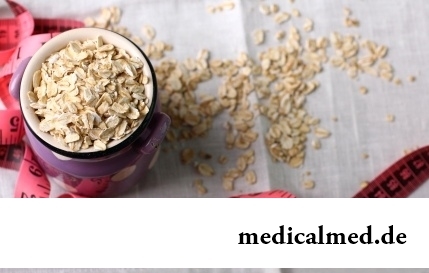
The list of stereotypes of which, apparently, all know strongly includes following: British surely eat porridge for breakfast. Perhaps, not all modern residents of Britain arrive quite so, but for those from them which continue to follow this tradition, it is possible to be glad sincerely: oat flakes are a product which regular use not only helps the person to keep force and beauty long. Porridge in a special way influences an organism, protecting it from seriousness...
Section: Articles about health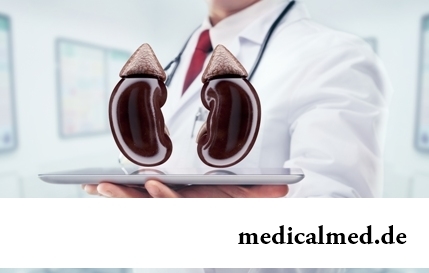
Kidneys perform the most important function of clarification of blood from those products of metabolic processes which cannot be used орг...
Section: Articles about health
Olive oil – the product capable to make a powerful contribution to health of the person if it includes it in the diet. The rich vitamin composition of oil does it by a product number one from many diseases including from deadly. Only two tablespoons...
Section: Articles about health
When overcomes feeling of hunger, and an opportunity to have dinner fully is absent, having a snack − the meals, small on volume, stabilizing sugar level in blood comes to the rescue. The relation of nutritionists to having a snack more often negative, but only because as snack people choose the most caloric products with the increased amount of "bystry" carbohydrates: cookies, rolls, chips, candies. Nevertheless, the advantage of having a snack is obvious to weight loss: the person avoids strong feeling of hunger...
Section: Articles about health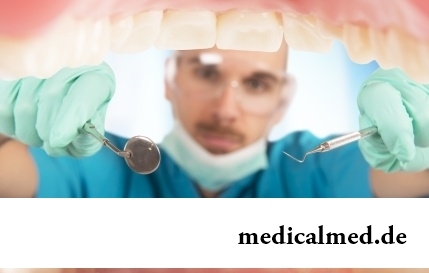
White teeth and the Hollywood smile – a dream of many people. Long time was considered that a plaque on teeth and change of their color – destiny of those...
Section: Articles about health
We present to yours the TOP of the medicamentous means exerting the stimulating impact on a potentiality, i.e. on ability of the man to commission of sexual intercourse. At once it is necessary to tell that not always disturbances of erectile function can be eliminated with reception of t...
Section: Articles about health
For the person who daily since morning gathers for work it is very important to wake up vigorous and ready by day of work. Actually, each of us experiences difficulties with this, at first sight, simple business from time to time. After night rest exert impact on a condition of an organism the weather which collected for several days fatigue, household and office problems, quality of a dream and many other factors....
Section: Articles about health

